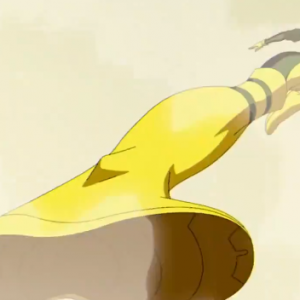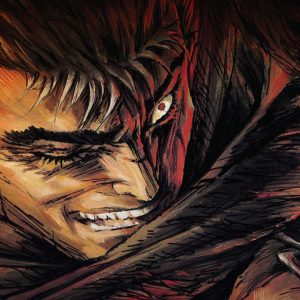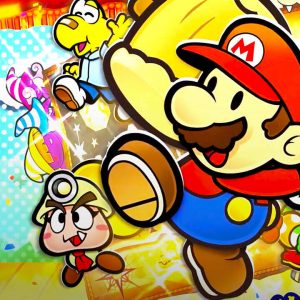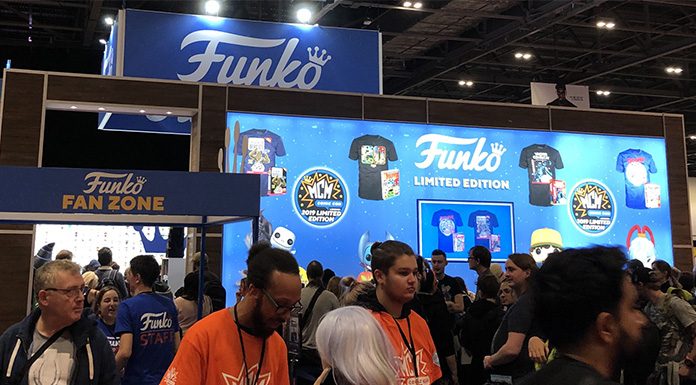The 90s was really the birthplace of the modern board game hobby. Yes, timeless artifacts such as Go, Mahjong, and even Cosmic Encounter pre-exist the post-Cold War decade, yet the groundswell of fresh titles with radical ideas really built the foundation for modern design principles. Germany was popping off with hits left and right, while the collectible card game format changed everything. Beyond the greats, there are several nearly forgotten releases that deserve recognition.
TL;DR The Best ’90s Board Games
Magic: the Gathering
Where else to start than with the game that started the collectable card craze and revolutionized games and game stores in the nineties? There was a time when almost every role-playing and board gaming club switched to playing Magic: the Gathering. And it’s easy to see why with the lure of finding powerful rare cards in hidden packs, planning a deck to construct around them and thrilling to the mix of random draw and strategic combinations during play. It’s a recipe that’s still almost as intoxicating today and the game remains in good health. With high prize money tournaments, online play, and regular expansions to collect there’s never been a better time to get involved.
Twilight Imperium
Many fans of Twilight Imperium would not even recognize its first edition. Fantasy Flight Games founder Christian Petersen brought his vision of a 4X board game to life way back in 1997. Flush with cardboard chits instead of plastic, the spirit of its later iterations was present in this inspired asymmetrical space conflict. Faction favorites such as the Jol-Nar and Emirates of Hacan were there right from the beginning, and the game was packed with an immense amount of setting. Its systems are slow and clunky by today’s standards, but this original release established a legacy that would prove the foundation for one of the strongest board game publishers of the early 2000s. The current fourth edition remains one of the most immersive and rich titles available.
Catan
Catan, known in the ’90s as Settlers of Catan, didn’t sweep the popularity stakes like Magic. Nor has it aged quite as well. But in many respects, it had as much — if not more — long-term influence on the gaming scene. Before Catan, almost all tabletop games were variations on war board games or dungeon crawling. But Catan’s mix of trading resources that players used to build a network of roads and settlements in an attempt to secure as much territory as possible showed us a whole new side to gaming. There was rich interaction without direct fighting or ganging up and rich strategy while still rolling a pair of dice and drawing random cards. It also introduced us to the novel paradigm of board games that existed in Germany, and gaming has never been the same since.
Robo Rally
Richard Garfield is known for more than just Magic: The Gathering. Robo Rally has players programming bots to dart around the factory in a ludicrous race. Each participant secretly chooses which cards they will play simultaneously. Then they are revealed and the robots start zipping around as chaos ensues. The goal is to pass through all of the checkpoints in order, which can prove more difficult than it initially appears. While many games would later nick Robo Rally’s programmed action approach, this was one of the first designs to lean into this creative and zany system. It still holds up and even just received a brand new reboot courtesy of Renegade Games.
Modern Art
Among the top designers who worked in German gaming, the most talented and prolific is Reiner Knizia. His oeuvre is so large that he’s worked on almost every genre but his particular love is for auction games, and his best auction game is Modern Art. Players take the role of dealers bidding to secure artworks based on five different methods of auction, from open bids to hidden values. But there’s a catch: your purchases will only be valuable if they’re popular: in other words, if other players are also collecting paintings by the same artist. This heady mixture of strategy and pointed satire on the art world is leant extra depth in the latest edition, which uses pieces by real-life artists.
Paths of Glory
This wargame arrived at the end of the decade with a splash. Boasting a harrowing playtime of up to eight hours, this beast attempts to simulate the entirety of the First World War. This is one of the early card driven games where players spend cards for flexible action points or to trigger specific narrative events. There is a fascinating element of deck manipulation as participants race to attain new cards, while also thinning their deck through playing events. This creates an interesting ecosystem of turnover that has subtle implications over the length of play. While some may criticize this design as being too complex, and there is a certain truth to the notion that Twilight Struggle later perfected this format, this is still quite the evocative experience that remains available through continual print runs over the years.
For Sale
You’ll rarely see so much game in such a small package as you will in For Sale. The game involves two decks of cards, one of real estate and the other of cheques, which are used in the two phases of play. In the first a selection of real estate cards is revealed each turn and the players bid on them using a limited supply of money. In the second, a selection of cheques is revealed and players secretly choose real estate from their hands to sell for those cheques, the most valuable getting the biggest payout. This simple game is a setup for endless agonising moments of not knowing whether you’re going to be outbid in an auction, or outclassed in the secret hunt for cheque payouts. It’s excitement all the way down to the wire, but is simple enough for kids to play and still rewards canny strategizing.
Blood Bowl
Adding this game here is a bit cheeky: you may have fond memories of the first edition of this crazy game of violent fantasy football, but the current edition is a complete redesign. The good news is that it’s even better: leaner, better looking and more strategic while still being just as crazy and just as violent. The Warhammer-esque underpinnings have been jettisoned in favor of a whole new game concept where your turn ends when you fail an action. That leaves every choice teetering on the precipice of risk and reward as you struggle to decide whether it’s worth prioritizing a dangerous action to advance your game plan. Plus, the old cardboard standees have been replaced with super-detailed plastic miniatures that look amazing on your tabletop.
Tichu
If Tichu didn’t require exactly four to play, it would have conquered the world. It’s not much to look at, essentially a rebranded deck of standard playing cards with four special extras, but there’s a reason for that. It’s actually a tweaked, commercialized version of a family of playing card games widely played in China. You play with a partner and the idea is to try and clear your hand by laying out a higher-value Poker style card combo than is currently on the table. But this basic formula is full of fascinating wrinkles because it’s rarely clear when it’s worth splitting a combo in your hand just to take what’s on the table, especially given the partner element. There’s also a pivotal bidding aspect because calling “Tichu” — betting you’ll be first to empty your hand — is where the bulk of points are won. Accessible, engaging and scarily addictive, Tichu deserves a much wider audience.
High Society
Given this is the second Reiner Knizia auction game on the list you may gather that the good doctor (he’s got a PhD in mathematics) is keen on the mechanic and good at delivering it. This is the lightest and fastest of the three (see one more below) but it still delivers thrills, spills and biting social commentary. Each round is a sequence of bids on some fancy item that indicates you’re part of monied culture. But while your cash reserves range from small to high value, you can’t get change: you’re forced to choose between creeping up your bid or risking being left with only high-value notes to fritter on paltry wins. The other twist is that some cards are negative; for these, bidding works in reverse, with the first player to pass “winning” and everyone else throwing away their cash. You’ve got to keep up with your social circle by spending vast sums on trifles without beggaring yourself, a point of view that’s as fun to play as it is alienating to observe in reality.
El Grande
Of all the games published in the ‘90s, El Grande is perhaps the most enduring and the one that still feels freshest and most relevant today. Which makes it surprising that it hasn’t seen a reprint and remains expensive on the second-hand market. The secret of its success is posing players with a series of circular, but interactive, conundrums to solve as they seek to maximise influence on a map of Spain. You can go early or gain more influence to spend, not both. You can take a powerful action, or you can put lots of influence on the board, not both. And of course you can’t possibly have the majority in all the regions of the board, you’ve got to pick and choose your battles. It’s so well done and pushes so many gaming buttons that it remains thrillingly playable 25 years after it was released.
Ra
Now, we come to another Reiner Knizia classic involving auctions. In Ra, you’re bidding on the history of ancient Egypt. Not in terms of artefacts but the far more abstract concepts of events, monuments, pharaohs and the like. Each type of tile has its own convoluted scoring mechanic, so you want to collect — or avoid — certain combinations. On your turn, you either add a tile to the stack available or start an auction, but currency in Ra is very limited and the winning amount becomes part of the next lot for auction. This makes every tile draw and every bid an excruciating elevator of excitement as you try and force players to bid on tiles they’d prefer to avoid while not getting caught in that trap yourself. This is back in print with a deluxe new edition that is gorgeous to behold.
























